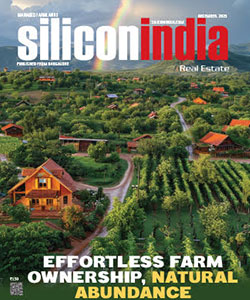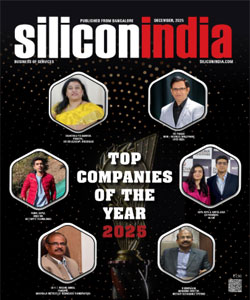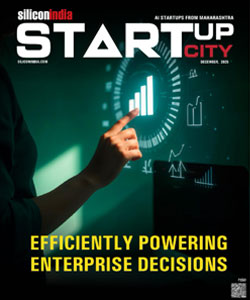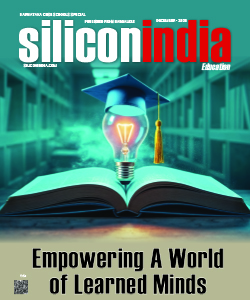Aluminium Manufacturing in India - Current Scenario & Future Prospects
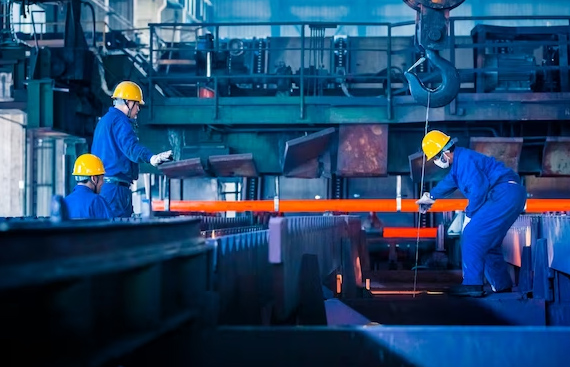
Having completed his BE degree in Electronics & Communication, Rahul holds an MBA in Marketing and has even completed the Executive General Management program from IIM Ahmedabad. He has been associated with Vedanta for 25 years now, prior to which he held the role of Chief Marketing Officer & Business Head - System Integration Business at Sterlite Technologies. Owing to his profound business expertise, Rahul has earned a reputation of being one of the well-known figures in the Indian Metal & Mining industry and has been actively involved in formulating various policies and creating a strategic frameworks for numerous government reforms.
Siliconindia recently got a chance to interact with Rahul, wherein he shared his insights on the current aluminium products manufacturing space in India, future opportunities and various other aspects. Below are the excerpts of the exclusive interview
Given the large number of countries’ Net Zero commitments globally and aluminium’s strategic importance in enabling the transition towards a low-carbon future, the demand for the ‘green metal’ is forecast to grow from 86 million tons in 2020 to 120 million tons in 2030. This is majorly driven by transportation, construction, electrical, packaging, consumer durables, machinery & equipment, which are linked to consumer demand and industrial activity in these regions. The aluminium market is currently in a state of flux, owing to a slowdown of the western economies and at the same time China abandoning its zero-COVID policy and opening its borders to trade, against the backdrop of a shift towards green energy solutions.
What are your thoughts on the current aluminium industry in India?
India’s aluminium demand is expected to be approx. 10 million tons by 2030, driven by a surge in transportation, building & construction, infrastructure development, electrical, renewable energy, aerospace and defense industries. We are currently witnessing an ‘aluminium revolution’ with major national projects such as Vande Bharat trains, urban metro rail development, capacity addition in renewable energy, 100 percent electrification, and more, thus exploring the potential of aluminium in various applications. Currently being the third largest producer of aluminium in the world, Indian aluminium producers with their state-of-the-art plants, focus on domestic value-addition, R&D and customer centricity, are well-resourced to cater to the current and emerging needs of the Indian industry for true self-reliance.
Throw some light on the latest technologies that are currently disrupting the aluminium industry
The aluminium industry globally is embracing new technologies like AI, ML, Augmented & Virtual Reality, and IIoT (Industrial Internet of Things aggressively). These technologies have disrupted the industry by improving -production efficiency, enhancing manpower productivity, and reducing costs. Furthermore, the industry is harnessing the potential of Industry 4.0 and Web 3.0 for manufacturing excellence. A robust integration of these new-age technologies gives aluminium producers real-time visibility of all critical plant operations, allowing for remote decision-making, right from procurement of raw materials to enhancing customer experience.
How are digitization and automation technologies enabling enhanced process efficiency in the industry today?
Digitization and automation technologies are transforming the way the industry operates and helping achieve greater efficiency, productivity, safety and sustainability. For example, deep learning algorithms and sophisticated modelling techniques enable Advanced Asset Performance Management at our smelters and power plants. Digital twin technology for predictive and prescriptive maintenance helps ensure greater efficiency, avoid downtimes and reduce safety risks with minimal or zero human touch. A robust Manufacturing Execution System gives us visibility of all critical plant operations, allowing for remote decision-making. These are but a few examples of how we are leveraging leading-edge technology solutions for extracting maximum productivity.
Tell us about Vedanta’s current positioning in the market.
Currently, we are one of the world’s top producers and India’s largest producer of aluminium. We have already produced more than half of India’s aluminium at 2.29 million tons in FY23. Digitization and automation are making our operations even more agile. Our aspiration is to be the world’s best and most sustainable aluminium producer, by harnessing the potential of digitization and new-age technologies. We are on a mission to convert a majority of our product portfolio into value-added products and reduce the import dependence of Indian industries in aluminium for true self-reliance. This will see us add new product lines and further diversify our product mix to meet the growing demand in strategic sectors such as defense, aviation, space exploration, electrical, construction & infrastructure, and sunrise sectors like high-tech manufacturing, electric mobility, renewable energy and more. Alongside this, we are also investing in the digital transformation of our plants & processes, leveraging green technologies, diversifying our energy mix to include renewables, and working towards our vision of net zero carbon operations.
In your opinion, how will the industry evolve in the near future?
Going forward, the demand for aluminium is going to be driven by the global energy transition, rise in consumer needs and demands of the strategic & sunrise sectors mentioned earlier. The transportation sector is going to be the highest demand driver, as the industry will continue to be guided by decarbonization policies and the shift in consumer preference from ICEs to EVs. EVs are currently range-constrained, and the charging infrastructure has a long way to go before it can help provide a seamless experience. Similarly, public transportation is also poised to undergo a green revolution. They will see significant usage of aluminium – for light weighting the vehicles and increasing their range, and for infrastructure development.
Rapid urbanization is going to be another major driver, with buildings, housing, public infrastructure, public transport, electrification and similar industries being major consumers of aluminium. The electrical sector will boom as countries transition to renewable energies, which are more aluminium-intensive, and expand their power grids. Going down the sustainability path, packaging is going to be another key driver of aluminium demand. Led by North America, the demand for canned beverages will see an increase in aluminium used for packaging, as the preference shifts towards non-plastic, sustainable and recyclable alternatives.
For a country like India which has explored only about 300 applications of aluminium, against 3000 in developed countries, the potential for innovation is limitless. Aluminium consumption in India, currently at about 3 kg per capita, is much below the global average of 12 kg per capita, which portends significant opportunities for growth.
Read More News :
Emerging Travel & Hospitality Trends in India Post Covid
Gender Diversity Among the Indian Workforce - The Current Scenario

